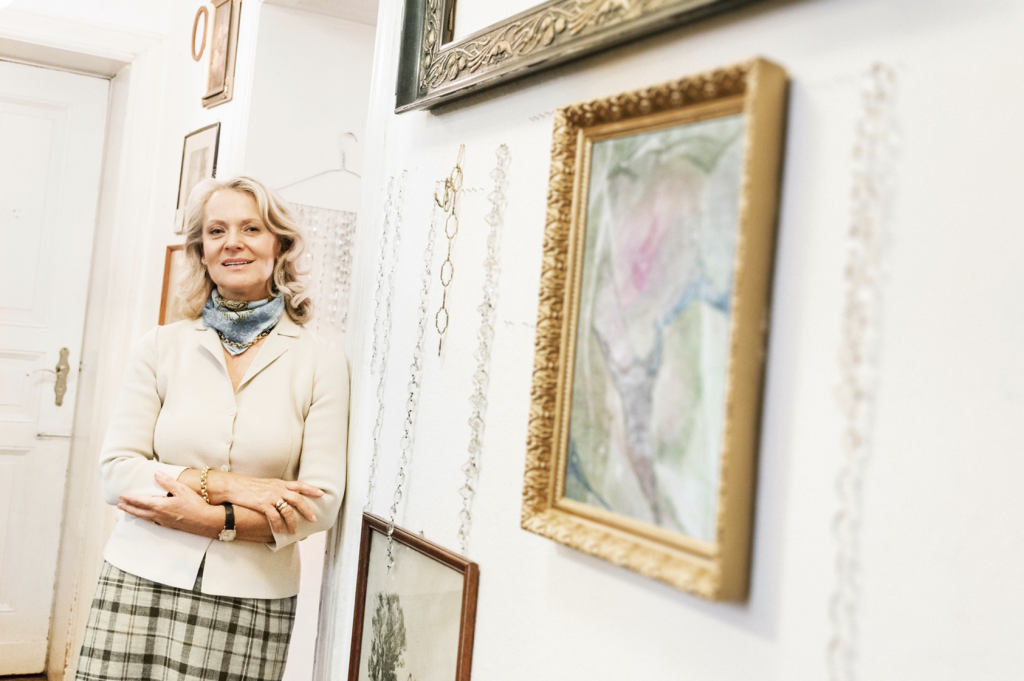A painting falls off the wall, dislodging a sculpture below. Soot shoots out of an active fireplace, blanketing a canvas hanging above it. Heirs take ownership of a valuable art collection, only to discover they can’t sell or insure it because they lack documentation. In my 17 years as an insurance specialist in fine art and collections, I’ve encountered all these unfortunate incidents and many more.
Such losses can hurt financially. But for many collectors, artwork can have sentimental value, an important piece of cultural heritage and a legacy to share with future generations. That’s why it’s important for all art enthusiasts to protect their works by caring for them properly, minimizing the risk of damage and having the right insurance in place for worst-case scenarios.
SAFEGUARDING YOUR COLLECTION EVERY STEP OF THE WAY
Collectors can’t always prevent accidents, but making smart decisions along the way can reduce the chances that damage occurs. Here’s how collectors can protect their cherished works throughout the collecting lifecycle — from acquisition to legacy planning.
Acquisition
You can take precautions even before you’ve purchased a work. Ensure that you’re buying pieces from a reputable source, such as established auction houses or galleries that show at well-known art fairs. It’s much riskier to buy from private dealers you don’t know much about. If you’re new to the space, an art advisor can help guide you through the process. Before making an acquisition, consider hiring a conservator who can evaluate the piece’s condition and note any prior damage or restoration, as well as any special display conditions it would require. Ask for all provenance documentation, which is a work’s ownership history. This will include where works would have been bought and sold. Having the right documents is key to avoiding questions about authenticity or rightful ownership, which can expose you to lawsuits, undermine a piece’s resale value or make it tough to get insurance.
Transit and Installation
Most damage to art occurs in transit. If pieces are packed or shipped improperly, the results can be catastrophic. When moving art, work only with professional fine art handlers accustomed to dealing with high-value and fragile pieces. Engaging specialists is equally important when installing your pieces — don’t leave it to a handyman! Experts know which hardware is appropriate based on the item and your location. For example, those in areas prone to seismic activity should use special installation hooks to provide an extra level of protection. Also, consider where you’re displaying works to make them less vulnerable. Avoid hanging pieces over an active fireplace, in direct sunlight, or in high-traffic areas, such as stairwells or outside a child’s bedroom.

Display and Storage
Water damage is another major source of loss for art collectors, whether due to a natural disaster, a burst pipe, or even a leaky sink in the residence two floors above you. Fires, excessive sun exposure, fluctuating humidity, and power outages can also threaten collections. To mitigate these risks, employ environmental controls that keep temperatures and humidity stable and minimize UV exposure (insurance typically doesn’t cover light damage). Install smoke detectors throughout the home that automatically notify a third party if activated. Backup generators can keep climate control and alarm systems functional if the power goes out. Create an emergency preparedness plan that lays out procedures for evacuating artwork and includes emergency contacts, such as art handlers and conservators. If you keep works offsite, rely on dedicated fine art storage warehouses rather than general facilities, and opt for a private unit when storing high-value or high-volume collections to reduce the chance of accidents. Check that the facility uses the same precautions you’d have at home, such as multilayer security, climate controls, and a disaster plan.
Of course, valuable works are also at risk of theft. Install multi-layered security systems that include a perimeter alarm system, interior motion sensors, glass break sensors, and 24/7 alarms for individual works. Strong inventory controls are also key for noticing and remediating losses, especially for collections that include many pieces across multiple locations. An old-fashioned spreadsheet does the trick, but digital management collection platforms make inventory management even easier: You can upload relevant information, including invoices, artist fact sheets, appraisals, condition reports, and images of works; pinpoint the location of works down to the room; and generate reports to see where everything is housed. Some owners also use radio-frequency identification tags on valuable pieces, but those only work within a single location.
Insurance
Whether they cover every piece or only those valued over a certain threshold, serious collectors need insurance. Coverage under a typical homeowners policy is usually not robust enough to protect fine art collections because it offers limited coverage, often excludes flooding and breakage of fragile items, typically has a deductible, and may only cover works located in a primary residence. Instead, choose a valuable articles policy with broad worldwide coverage, which protects works whether they’re at home, in transit or in storage. Make sure the policy includes no deductible for most causes of loss. The best options offer extra protections, such as automatic coverage for newly acquired works or automatic coverage extensions to provide a cushion if market value spikes. Work with a broker who can help you find a trusted insurer that specializes in the fine art space.

Lending and Consigning
Many collectors loan their works to museums or other institutions, a benevolent gesture that adds unique risks. Before handing off your pieces, sign a written loan agreement with the borrower outlining how the work will be packed and shipped and whose insurance will cover it at each juncture. Borrowing institutions often insure works from the moment they leave the owner’s wall to the moment they return, but make sure the borrower has an appropriate all-risk policy and consider leaving your own insurance in force as a backup. Make sure a professional art handler will ship and install the works, and request condition reports before a work is packed, once it’s uncrated and before it’s returned. If the piece will be exhibited publicly, ask the institution whether it will offer a security guard, glass case, glazing or other measures to protect the item.
Ongoing Maintenance
Once you have proper measures in place, you still need to manage your collection consistently. Make sure you know how to properly clean and maintain each piece and do so regularly. Engage conservators at least annually to evaluate the condition of works and treat pieces if needed, especially for outdoor sculptures. Check or replace installation hardware at least every decade, as picture wires and hooks can weaken over time. Keep your inventory system current, updating the location and current value of works. On the financial side, get your collection reappraised every three to five years, or every one to three years for volatile market segments like post-war and contemporary art. Update your insurance policy with current appraisals to make sure you’re not underinsured if something happens.

Legacy Planning
When it comes to passing on your collection, communication, and planning ahead are key. Don’t assume your heirs want all your pieces or would treat them as you do. Ask them about their interest and plans and evaluate whether they have the maturity and living conditions to properly care for your art. Get key documents in place, especially provenance paperwork for older pieces, to pass on with the collection. Make sure your heirs know how to properly ship, install and maintain the works, and share contacts for experts you trust. And let heirs know they will need to get pieces reappraised and take out their own valuable articles policy once the collection is theirs. If you plan to donate to an existing museum or foundation, confirm they will accept the item and the terms of the donation, including when they will take over insurance for your artwork.
Preserving Your Legacy
Safeguarding a valuable art collection requires a proactive approach at every stage of the process — starting even before you’ve made a purchase. Doing your due diligence, properly transporting and caring for works, and tailoring insurance coverage to the unique needs of art collections can help minimize the chances of loss and protect you if the unavoidable happens. Taking the right steps can help you maximize the longevity of your pieces and preserve them for generations to come.
Author’s Bio:
As Senior Vice President, Fine Art & Valuable Collections Manager, at Chubb, Laura Doyle leads underwriting and growth strategies. She advises private collectors and family offices on unique risks including museum loans, consignments, private museum programs, art as collateral, and international transit and storage. Chubb is the world’s largest publicly traded property and casualty insurer. With operations in 54 countries, Chubb provides commercial and personal property and casualty insurance, personal accident and supplemental health insurance, reinsurance and life insurance to a diverse group of clients.


